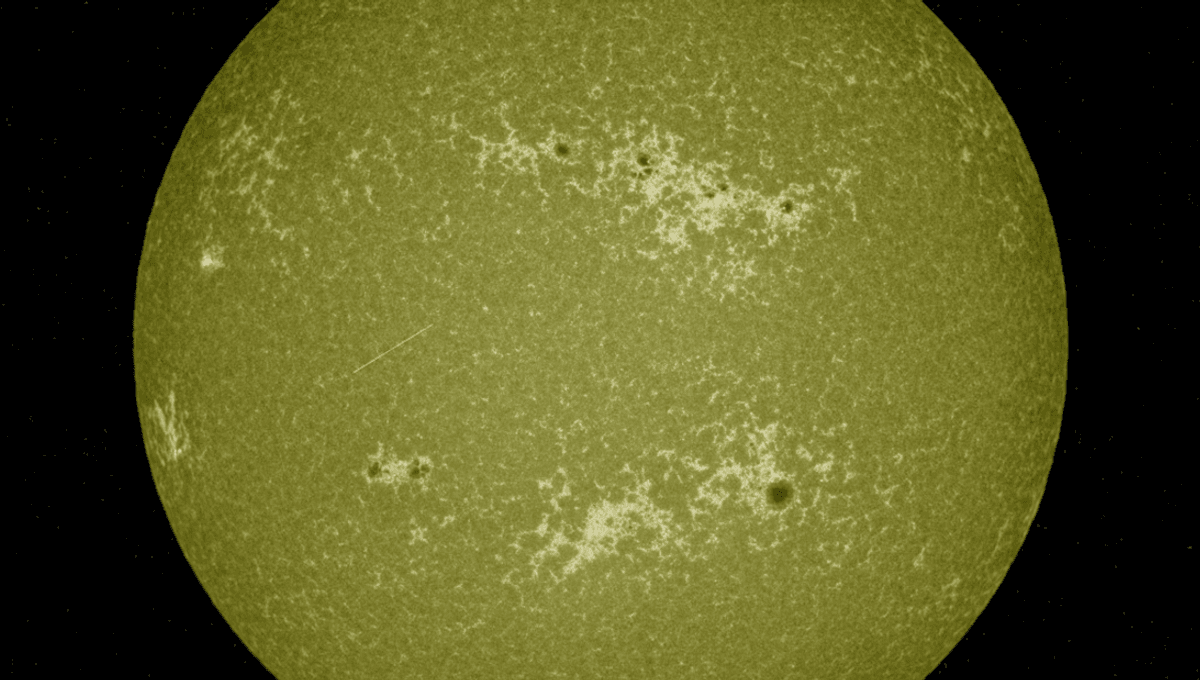
A sunspot four times the size of the Earth is making its way across the Sun at the moment. The spot is so large you can see it without a telescope, though of course you should use protective equipment.
Sunspot AR3310 should be visible to you using solar viewing glasses, those cool disposable shades you foolhardily threw away after the last eclipse. Sunspots are areas of the Sun that appear darker due to a slightly lower temperature.
“Sunspots are areas where the magnetic field is about 2,500 times stronger than Earth’s, much higher than anywhere else on the Sun,” the National Weather Service explains. “Because of the strong magnetic field, the magnetic pressure increases while the surrounding atmospheric pressure decreases. This in turn lowers the temperature relative to its surroundings because the concentrated magnetic field inhibits the flow of hot, new gas from the Sun’s interior to the surface. “
Sun activity increases and decreases in a 11-year cycle known as the Schwabe cycle. From 1826 to 1843, German amateur astronomer Heinrich Schwabe observed the Sun, discovering that it rotates on its axis once every 27 days. He noticed the Sun goes from quiet periods, where no sunspots can be seen, to the maximum phase where 20 or more groups of sunspots can be seen.
The Sun’s activity is increasing at the moment, with the next solar maximum predicted to be around July 2025, according to NASA. However another team believes that they have a better prediction by looking at magnetic donuts which form at 55 degrees of latitude on both hemispheres of the Sun. These formations migrate towards the equator where they meet and cancel each other out, which the team dubbed a Hale cycle terminator.
This terminator event tends to happen up to two years after the minimum, and by focusing on these events the team believed they could make better predictions about the solar cycles.
“If you measure how long a cycle is, not the minimum to minimum, but from terminator to terminator, you see that there is a strong linear relationship between how long one cycle is and how strong the next one is going to be,” NASA research scientist Robert Leamon told Space.com.
Using the approach, they predict that the next solar maximum will take place a year earlier, in mid-2024. But you don’t have to wait that long to see an awesome sunspot.
Source Link: A Sunspot Is So Large Right Now You Can See It Without A Telescope